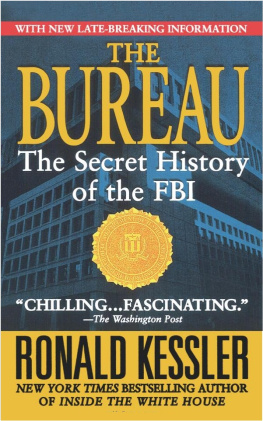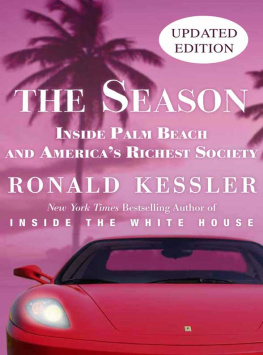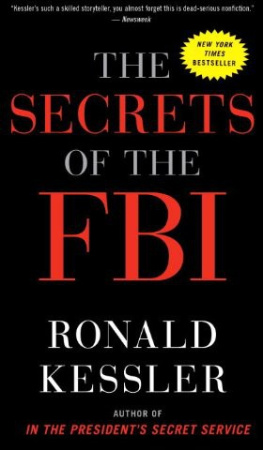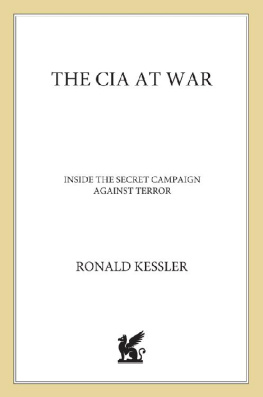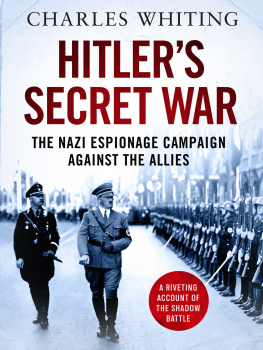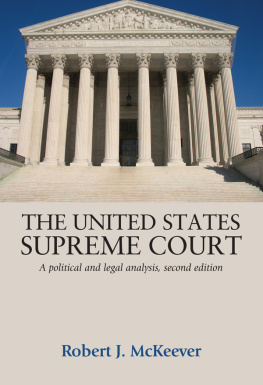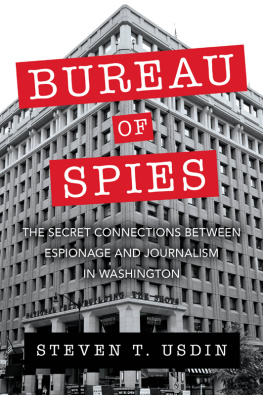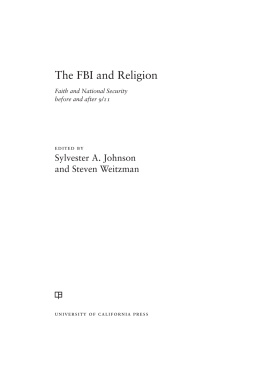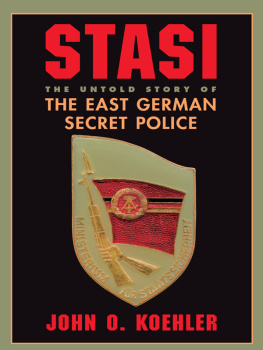THE BUREAU REVEALS:
The first definitive evidence that J. Edgar Hoover blackmailed Congress with information from his secret files.
The source of Senator Joseph McCarthys bogus claims that there were 205 Communists in the State Department.
The FBIs secret kidnapping of Soviet agents believed to be privy to KGB secrets.
Details of the FBIs tapes of Martin Luther Kings sex orgies.
The truth about Hoovers sexual orientation and his relationship with Clyde Tolson.
A mysterious meeting between Bob Woodward and W. Mark Felt suggesting that the former FBI official was Deep Throat.
The FBIs routine discoveries of Israeli wiretaps on phone lines of foreign diplomatic establishments in New York.
Techniques used by the FBI to break into embassies to plant electronic bugs.
Louis Freehs colossal mismanagement of the bureau, which contributed to the problems at the FBI laboratory, the indictment of Wen Ho Lee, the fiasco involving Richard Jewell, the continued spying of Robert Hanssen, the failure to turn over documents relating to Timothy McVeigh, and the FBIs counter-terrorism failure before the attacks by al-Qaeda.
An order by Freeh to jail James Nichols in the Oklahoma City bombing case when there was insufficient evidence to charge him. When told that by the Special Agent in Charge (SAC) in Detroit, Freeh said if the SAC did not proceed with charges, he would replace him. A judge finally freed Nichols a month later.
Leaks by Freehs staff to enhance his image, even while FBI agents could not use bureau cars because money to buy gasoline had run out. Computers were so antiquated that charities would not accept them, and they slowed the FBIs response to the attacks of September 11.
Robert Muellers efforts to correct the problems created by Freeh, moving the FBI toward being as effective as it was under William Webster.
THE BUREAU
The Secret History of the FBI
RONALD KESSLER
St. Martins Paperbacks
For Pam, Rachel, and Greg Kessler
PROLOGUE
When Barry Mawn headed the Boston Field Office, the copilot of EgyptAir Right 990 purposely plunged his Boeing 767-300 into the Atlantic off Nantucket. When Mawn headed the Newark Field Office, the Unabomer struck in New Jersey, killing public relations executive Thomas Mosser. Federal Bureau of Investigation agents joked that they did not want Mawn, an affable Irishman from Boston, to come to their office. He brought trouble.
Now, as the fifty-six-year-old Mawn was going through his in box at the New York Field Office just before 8:45 a.m. on September 11, 2001, he heard an airplane flying lower than it should have. As the assistant FBI director in charge of the office of 1,100 agents, Mawn had a corner suite on the twenty-eighth floor of the Jacob Javits Federal Building at 26 Federal Plaza. From his north window, he could see the Manhattan skyline. From his west window, he could see part of the World Trade Center.
Just then, Mawn heard an explosion. Kathy MacGowan, his secretary, screamed.
The World Trade! The World Trade! she shouted.
Mawn ran to her window, which had a full view of the 110-story Twin Towers. Black smoke was billowing from the North Tower. MacGowan said a commercial jet had crashed into it. Mawn thought it was an accident.
Call my Evidence Response Team, Mawn told her. Just in case, call the SWAT and the Joint Terrorism Task Force. Send them to Church and Vesey. Ill head in that direction.1
Mawn removed his .40-caliber Glock from his oak desk, the one J. Edgar Hoover once used in New York, and stuffed the pistol in his holster. Behind the desk on the wall was an artists sketch of Mawn and others at a hearing in federal court in Newark on charges against Unabomer Theodore J. Kaczynski.
As Mawn was about to leave, David N. Kelley called. He was the chief of the U.S. attorneys Terrorism Unit. Mawn agreed to meet him outside the building. Together, they hustled the eight blocks to Vesey and Church streets, at the northeast corner of the World Trade Center. As they got closer, Mawn saw people hanging out of the highest windows. One person jumped.
Police Commissioner Bernard Kerik and other police officials were already there. Like Mawn, they thought the crash was a ghastly accident.
As we were standing there, we saw another plane come in from the north and turn around, Mawn said. We lost sight of it for a minute, but the next thing, it hit the South Tower. We were stunned. Everyone instantly recognized its not an accident. Were under attack.
With both towers in flames, dozens of people were jumping from a hundred stories up. Huge slabs of concrete and hunks of burning metal started raining down. Mawn learned later that an eight-hundred-pound wheel assembly from one of the planes landed three blocks north of where he was.
Everyone started running for their lives. Mawn wedged himself into the space behind the cab of an ambulance van. When the rain of debris began to diminish, he headed back to the corner, where he saw Kelley and the police officials. By now, hundreds of FBI agents had converged on the area. Mawn told agents to set up a command post.
After several tries, Mawn got through on his cell phone to Robert S. Mueller III, the new FBI director. Mawn told him that the phones were down and they needed Air Force jets. A week earlier, Mueller, a prosecutor and former Marine, had taken over from Louis J. Freeh. Under Freeh, the FBI had lurched from one debacle to another, its credibility and morale shattered. Now the bureau faced the greatest challenge in its ninety-three-year history: tracking down those responsible for the worst attack ever on America and making sure another attack did not occur.
After the White House, Congress, and the Supreme Court, no institution was as powerful as the FBI. No institution was as important in preserving American freedoms. But from the beginning, the bureau had engaged in abuses, trampling on individual rights. From DNA analysis to profiling, from confirmation of Supreme Court justices to investigations of plane crashes, Mafia figures, corporate frauds, and spies, the FBI would become involved in almost every aspect of American life. Yet the question remained whether having what amounted to a national police force was consistent with a free society. And now the question was whether the agency could be trusted with the unprecedented task before it.
Mawns mind flashed back to the 1993 hit on the World Trade Center, when six people were killed. He remembered when the FBI foiled an attempt to blow up the Holland and Lincoln tunnels, the United Nations, and the FBIs New York Field Office. Osama bin Laden and his al-Qaeda were behind the terrorist plot and, as it later turned out, had connections through Al Kifah Refugee Center in Brooklyn to some of those convicted in the 1993 attack. Now bin Laden had succeeded beyond his wildest expectations.
As Mawn and Kelley began walking west on Vesey, Mawn looked down and saw a female leg on the street. It was severed at the knee, a pink sock and white sneaker still on it.
Jesus, Mawn whispered.
Mawn heard a rumble. He and Kelley were standing outside 7 World Trade Center, a smaller building in the shadow of the Twin Towers. Edmund Hartnett, the police departments chief of intelligence, had just joined them. The deafening, earthshaking roar was the South Tower imploding, coming down all around them, along with more people, some holding hands on their way down.
I knew I couldnt outrun it, Mawn said. I have a herniated disk. A couple of firemen ran by me. I figured theyd know what to do, and I ran with them. Hartnett and I ran into the lobby and ducked behind a huge column.

